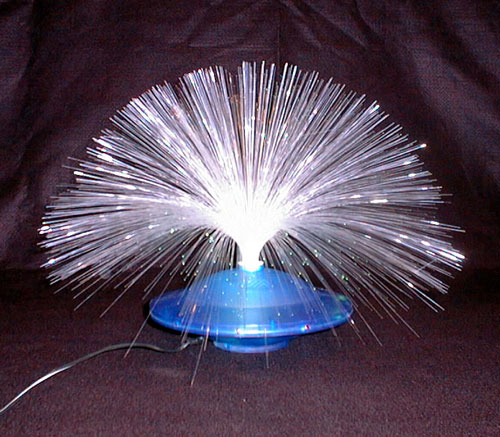IBM researchers in the US have unveiled a prototype of a new technology for optical communication, which may revolutionize ultra-broadband communication, for various types of devices - from mobile phones to supercomputers while significantly saving energy

The new technology, based on the use of light instead of wiring, is able to transmit 8 trillion bits (tera-bit) per second, which is equivalent to 5,000 simultaneous transmissions of high-definition video - while consuming an electric current similar to that of a 100-watt light bulb.
Such bandwidth may optimize energy consumption in data processing centers, and speed up the rate of data sharing and its use, leading to new scientific discoveries, more reliable systems for predicting weather and climate change, or extracting new business value from the data stored during current organizational activity.
In typical internal communication applications in data processing centers, for ranges of 100 meters, the energy consumption of the new technology is one hundredth that of the existing communication technologies.
The new system is based on a unique transceiver chip set, which includes optical components and same optical processing channels in a single package, on top of a standard component.
The envisioned applications of this technology include delivering high-definition video content and video-on-demand services to ever-larger numbers of users, using a wide variety of end devices.
Another use expected by IBM engineers is in medical systems for remote monitoring and treatment of patients. Basic versions of these technology components will form the basis for entertainment electronics devices - while the world of supercomputers is expected to adopt the technology as an infrastructure that will allow a jump to new levels of performance.
IBM's optical integrated circuits "optical cards" use polymeric materials to transport optical signals in order to transmit light between the transmitter and the optical receiver. The data channel in these cards combines a large number of high-speed channels - and packs them in an unprecedented density: each channel - which is thinner than a single human hair - uses light of a different wavelength. IBM's optical chip is a three-dimensional component manufactured in a process similar to that of conventional electrical chips. Its main data channel, at a rate of 10 gigabit per sub-channel - is the first of its kind in the world produced on a printed circuit board, and is capable of providing integrated communication from module to module, of 32 optical data channels.

5 תגובות
First of all, kudos for the articles you bring (applying lessons from the reviews I posted earlier and received responses against colds)
The wording should be "with a power of 100 watts - like an average household light bulb"
The technology is indeed not new, it is a miniaturization of existing technologies, a natural course and part of the life cycle of any technology.
Appetite!
An exploded title for a technology known since 1998
The technology is called in Hebrew "wavelength multiplexing on a single fiber" or as it is known in commercial jargon as DWDM and in itself there is no innovation
The only innovation (and actually another technological development) is the fact
that the multiplexing itself is done directly on the card and not through an optical system
externally something that saves energy.
And between us, I already know about works (still experimental) that were done in the company
"Alcatel" including 192 wavelengths with a carrier frequency of 80 GHz
Then we are already talking about 15 terabytes per second…..
Prototype…
When do you expect to see products that use technology?
Why exactly a hundred watt bulb?
Why not a "hundred watt electric toothbrush"
Or anything else that consumes a hundred watts?
Cyber optic technology, what's new in this?